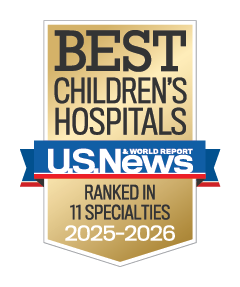

Three-dimensional echocardiography (3D echo) is a groundbreaking technology that has significantly expanded treatment possibilities within pediatric cardiac surgery. Although initially developed for adults, this advanced imaging technique was rarely used in pediatric cases until recently.
"When I first entered this field, obtaining a 3D echo for an infant was an immense challenge," recalls Doaa Aly, MD, pediatric cardiologist and director of the Pediatric 3D Echocardiography Program at UCSF Benioff Children's Hospitals. "Today, performing high-quality 3D echoes on babies just a few days old has become routine, thanks to the rapid technological advancements and UCSF's commitment to embracing innovations such as these to enhance patient care."
Advancing Visualization of Heart Anatomy
Valvular heart disease has long posed challenges for pediatric cardiologists due to limitations in visualizing and understanding the mechanisms behind valvular dysfunction. However, the advent of 3D echo has dramatically transformed this landscape.
"We can now visualize heart valves with unprecedented clarity and understand the mechanisms of valvular dysfunction, leading to more accurate diagnoses and better-informed surgical interventions," says Dr. Aly.
UCSF's expert team includes highly specialized surgeons renowned for their ability to repair intricate heart structures. The 3D echo program enhances their surgical approach, with specialized sonographers collaborating closely with Dr. Aly to obtain and analyze 3D echo data sets. Once the 3D images are captured—often within minutes—Dr. Aly consults with the surgeons to formulate a precise and effective plan for valve repair.
"This advanced visualization saves surgeons valuable time in the operating room, allowing them to approach the procedure with a clear and precise road map," Dr. Aly explains.
Perioperative Applications
The technology can be used during all stages of the perioperative process. In addition to obtaining pre- and post-operative images, the team can utilize 3D echo, including 3D transesophageal echocardiography (3D TEE), intraoperatively.
"We often use the technology before the patient leaves the operating room," Dr. Aly says, "so if there is any residual deficiency, the surgeon can immediately address it to ensure the patient achieves optimal results. It is continuously available, and as a result, we are seeing improved outcomes regarding residual issues."
Improving Outcomes and Expanding Options
At UCSF Benioff Children's Hospitals, the implementation of 3D echo has reduced residual valve dysfunction following valve surgery.
"Our routine review of case outcomes has demonstrated that all surgical cases utilizing 3D echo were successful, with no significant valve dysfunction post-surgery," reports Dr. Aly. She attributes this to a winning combination of precision medicine and highly skilled surgeons.
For many pediatric patients with valve disease, 3D echo offers a route to treatment and recovery. "Patients who have valve disease, often not knowing whether it could be fixed at all, now have a path to healing," Dr. Aly says. "This technology helps us not only treat valve disease but also helps determine the necessity and timing of interventions, providing hope for patients and their families."
There are many benefits of 3D technology, according to Dr. Aly: "It is non-invasive by nature. It does not involve radiation, sedation, intubation or any other exposure. We are doing this efficiently at the bedside, NICU, ICU, OR, ER or wherever we are needed. Plus, we can offer 3D echo for patients of all ages, genders and body sizes; there are no restrictions or limitations."
Research and Future Directions
The benefits of 3D echo extend far beyond the clinical realm. "There is a huge, evolving data and research effort to use AI to get the most out of 3D echo," Dr. Aly says. "We are initiating an entire area of research in which we utilize AI to extract images from these 3D data sets. The hope is that we can even replace the routine echo, which tends to be very time-consuming. 3D echo plus AI significantly reduces scanning and interpretation time, vastly expediting the echo workflow from the current 30-35 minutes on average."
Access and Innovation
While 3D echocardiography for pediatric patients is not widely accessible nationally, UCSF Benioff Children's Hospitals have made it available across all their locations. Dr. Aly and her team travel with the technology so patients don't have to be transported or wait long for results.
"Our outstanding team prioritizes 3D echo appointments, ensuring rapid care for our patients," Dr. Aly adds.
By enhancing visualization, improving surgical outcomes and expanding treatment options, 3D echocardiography is improving the quality of life for many young patients with heart disease and their families.



